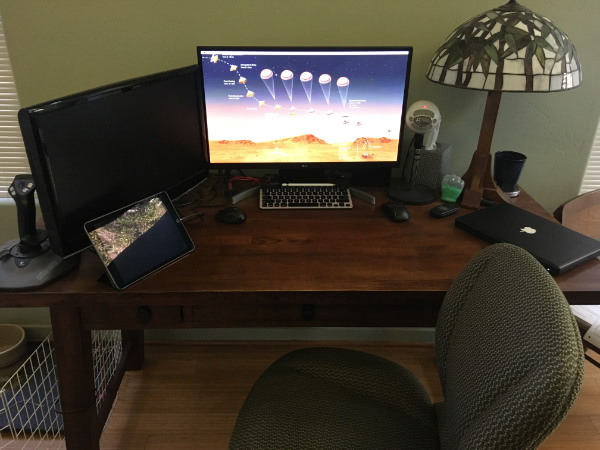In 2013 I upgraded from my laptop to a Mac mini when I could no longer develop apps on my laptop. I wanted to test whether my apps would run on the new M1 chip (they do) and it was taking forever to compile and run on the old setup so it was time to upgrade again. I wrote a post at that time with reasons to go with a Mini instead of a laptop and the underlying rationale hasn’t changed since then. The price difference is much less now, $699 for my base model Mac Mini with an M1 chip vs $999 for a laptop but I still opted for the Mini. My old monitors either don’t have the resolution for the Mini or didn’t work at all so I had to spend $373 for a new monitor and a few cables so my total outlay was a little over $1,110.

Rather than doing a migration from the old computer with all of the old files from multiple migrations, I opted for a fresh start. The only program that doesn’t work on the new setup is Acorn.(Fixed with Version 7) Firefox works but often freezes after waking. When I first got the computer it sometimes wouldn’t recognize the keyboard, but I think they must have fixed that problem with an update since it hasn’t happened for quite a while now. Otherwise, no issues.
I connected the two Minis with a 6″ Cat 5 cable so I can open files on the old computer and work on them on the new one. I connect in the Finder with Go->Connect to Server->Browse. It works fine although Pages wants to autosave and the old computer doesn’t support whatever it wants to do so I have to keep telling it that there really isn’t another program that has the same document open.
I had an old Samsung TV that I now use for the old Mini. It is also connected to my big monitor. I still have most of my email on the old computer, which was a big reason to have two monitors, so I haven’t missed having the new Mini connected to just the big monitor. It’s an LG 27″ 4K monitor. The text is crisp and colors fine.
You might notice the joystick next to the monitor. The M1 Mini is fast enough to run X-Plane and it is completely silent when running. That is one big plus for the M1; it has fans but I have never heard them. It also has an SSD instead of a spinning HD so I never hear the HD whine. It also opens Xcode and my project in seconds rather than multiple minutes that the old Mini requires. Waking from sleep and rebooting are also significantly quicker—orders of magnitude quicker. When Apple says this Mac is fast, they really mean it.
When I bought my Logitech keyboard I got one that could also connect to my iPad. I never used it for that but the ability to connect to three devices with a key press makes it handy for switching back and forth between the two computers. I frequently forget which computer I am connected to but so far haven’t done any damage to my files.
I was considering getting a mouse that would switch back and forth, but using two isn’t an issue and I don’t see the need to spend $100 on a new one.
Here’s hoping this setup will last me another eight years.